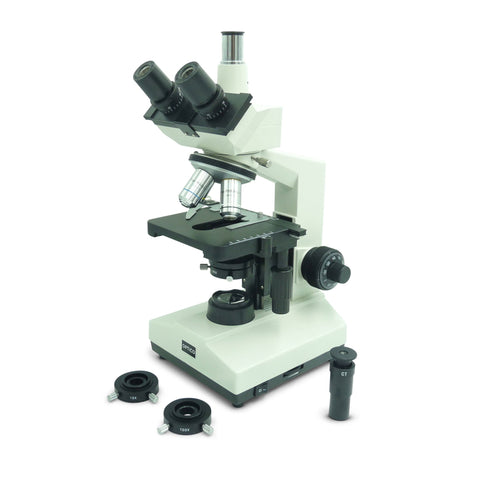Phase Contrast Microscope for Semen Analysis
Sperm analysis plays a pivotal role in livestock industries, with the results determining whether animals are sold, mated, treated or even destroyed. Low fertility in affected flocks and herds can seriously affect profitability.
For reliable analysis that is easily interpreted, the tool of choice is a phase contrast microscope. Using phase contrast, sperm that under normal light microscopy cannot be seen is observed in sharp outline and in good contrast to their surroundings.

What is phase contrast?
If you’ve ever owned a nice camera, dabbled in art or played around with Photoshop, you know how important contrast can be to the quality of any image. The same is true in microscopy.
Regular microscopes commonly do a poor job of picking up details in living cells because there is too little contrast between structures – especially in the case of sperm, which are highly transparent.
Phase microscopy translates small changes in light phase into changes in amplitude (brightness), which are then seen as differences in image contrast. It produces dramatically clearer images for you to see and photograph.
Why use phase contrast in semen analysis?
Typically, phase contrast finds a larger number of abnormalities like clumped chromatin, knobbed acrosomes and vacuoles in the head of the sperm cells. For instance, an experienced operator will pull out about 8 to 10% of bulls for being unsatisfactory that would be called satisfactory using regular light microscopes.
While regular microscopes can readily evaluate motility – how the sperm ‘swim’, phase contrast microscopy is superior in assessing morphology (structure). And it is the morphology of the sperm cell – that is the size and shape of the head, midpiece and tail – that is now recognised as the most important measure of fertility in a male.

Phase contrast readily shows abnormalities such as detached heads, bent and returned tails, broken tails and twin heads or tails.
Allowing for operator skill and experience, good microscopy helps to ensure a particular animal is physically and sexually competent to participate in any breeding operation.
Advantages of phase contrast
- Cost – phase contrast objectives and condensers can be purchased at a relatively cheap price given the level of sophistication and what the components allow you to achieve.
- Clarity – phase contrast allows you to see freely moving, alive and uncontaminated specimens with great detail.
- Ease of use – whether in the field or in the lab, phase contrast microscopes are increasingly recognised as the top-rated microscope for this type of work.
Disadvantages of phase contrast
- In some cases, the price of objectives in general may be prohibitively expensive for hobbyists, unless you are really going to get some use and utility from it.
- A halo light ring is a natural result of using phase contrast, but most people consider this a distortionary effect that takes away from the image quality.
- Phase contrast also doesn’t work well with thick specimens as these can appear distorted.
It is easy to purchase a microscope with phase contrast components built in, but not everybody can afford such expensive equipment. Fortunately, it is also relatively simple and inexpensive to adapt a regular microscope for phase contrast.

Optico XSZ-107T-PHB Semen Analysis Microscope (PLAN Objectives)
The major manufacturers all provide phase contrast accessories for their research-level microscopes, in both upright and inverted (tissue culture) configurations.
Given how much is riding on animal husbandry, these simple add-on units represent a solid investment for your farm or lab.

Optico BM2000PH - Professional Semen Analysis Microscope
Microscope Temperature Control Stage
For checking semen motility it is recommended to use a microscope stage temperature control system that ensures accurate, stable thermal control of live biological specimen observations. Ideal for checking semen motility, the stage warming deck is made high tensile aluminium which maintains a constant temperature less than +/-1º C between a setting range of 20º C to 50º C.


